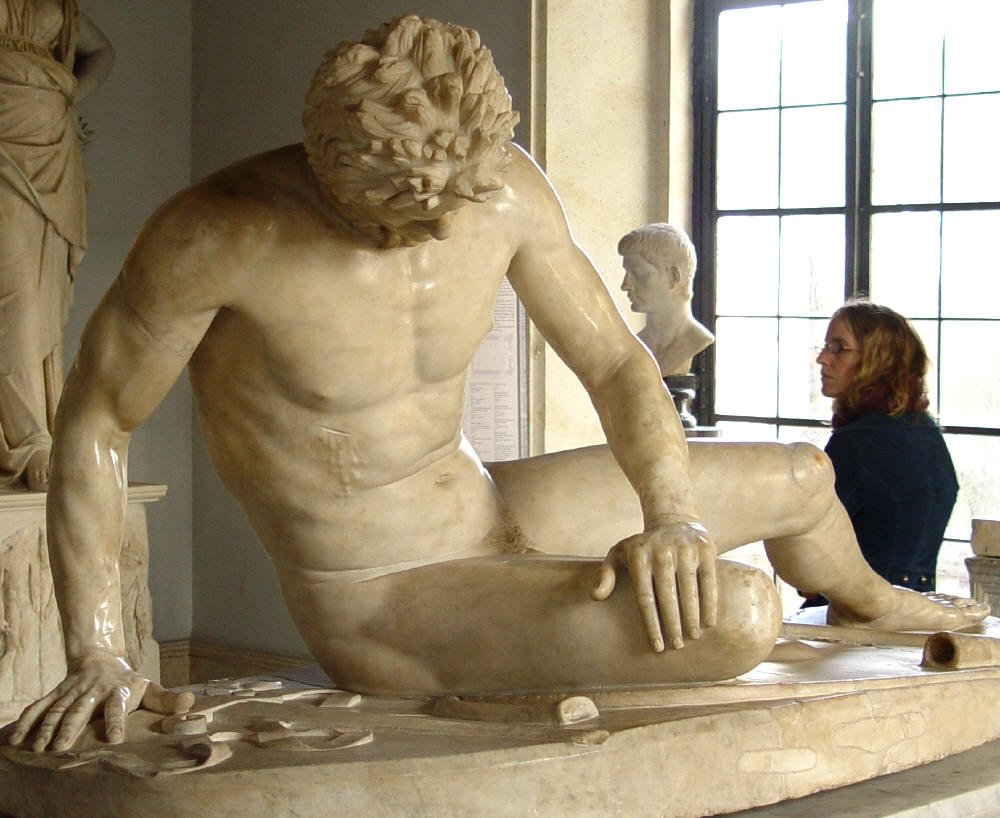The Dying Gaul depicts a wounded Celtic warrior who lies upon the earth awaiting death. It was found in the gardens which had belonged to Sallust, a Roman historian. The statue is a Roman copy of one of the bronze statues dedicated at Pergamon by Attolos I in commemoration of his victories over the Gauls who had invaded Asia Minor in 239 B.C. Fourth and fifth century Greek sculpting had never depicted such a subject. It must have been a startling innovation at the time of its creation. The moustache, matted hair and twisted collar identify the warrior as a barbarian. He supports himself on one arm as his strength ebbs away. The moustache, matted hair and twisted collar identify the warrior as a barbarian. He supports himself on one arm as his strength ebbs away. With the realism characteristic of Hellenistic art, his skin appears hard and dry, the muscles heavy in contrast to the ideal Greek type. Blood oozes from the open wound. However, the sculptor introduces these realistic touches with artistic restraint. It is a concept that goes beyond physical pain to speak of the anguish of defeat which destroys the spirit rather than the flesh.
